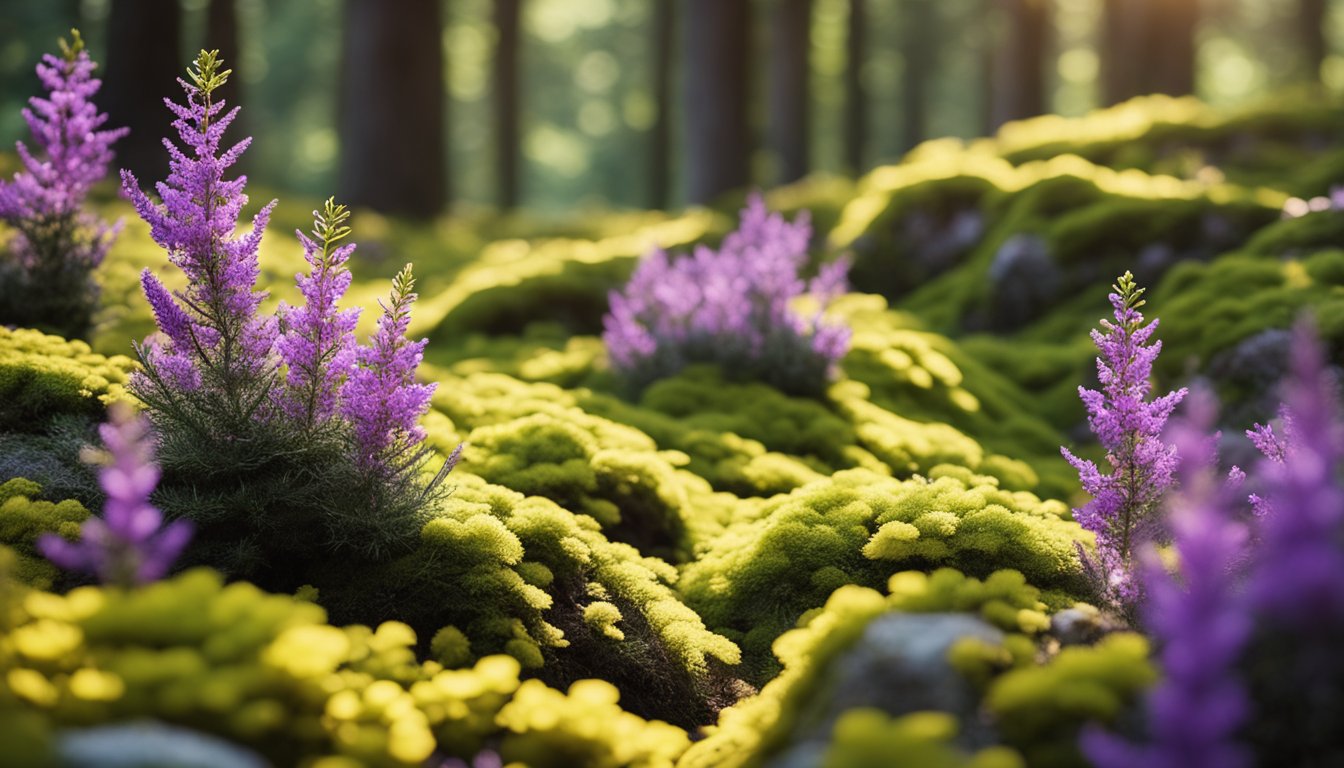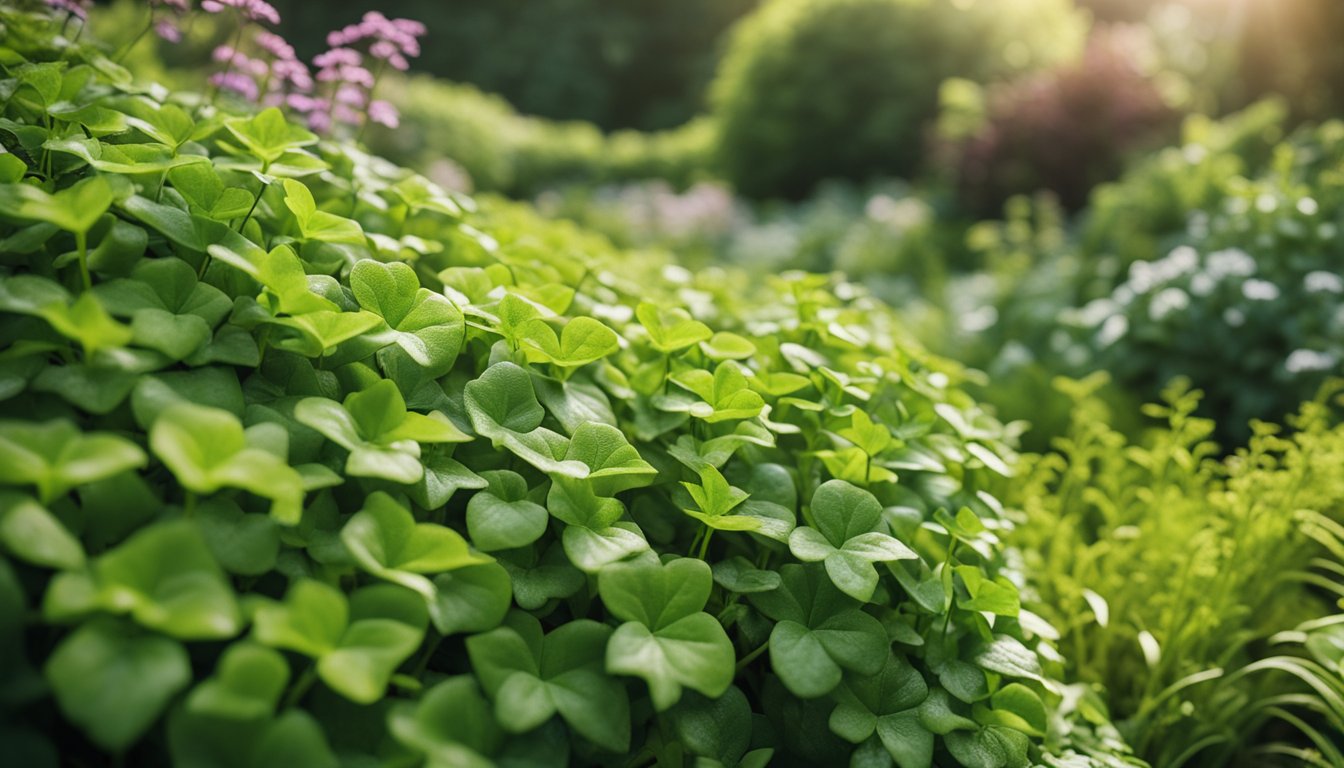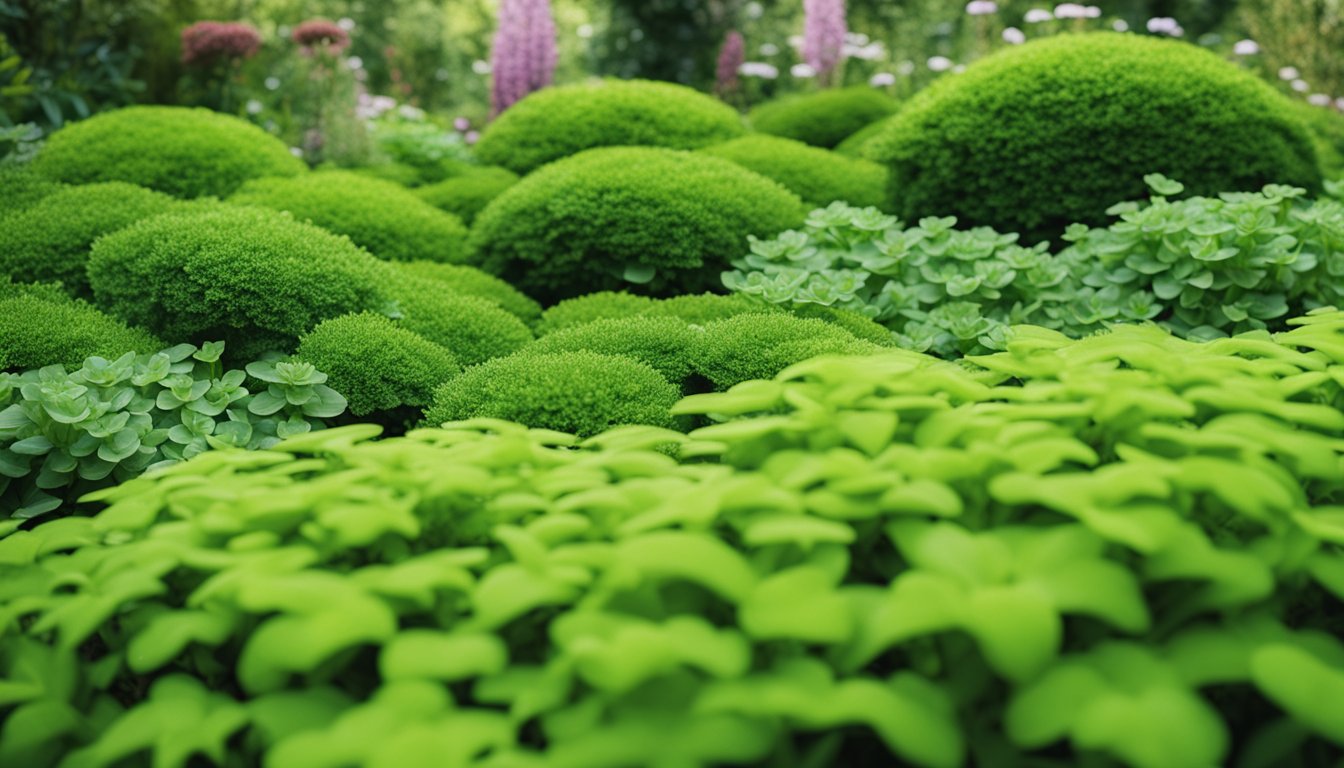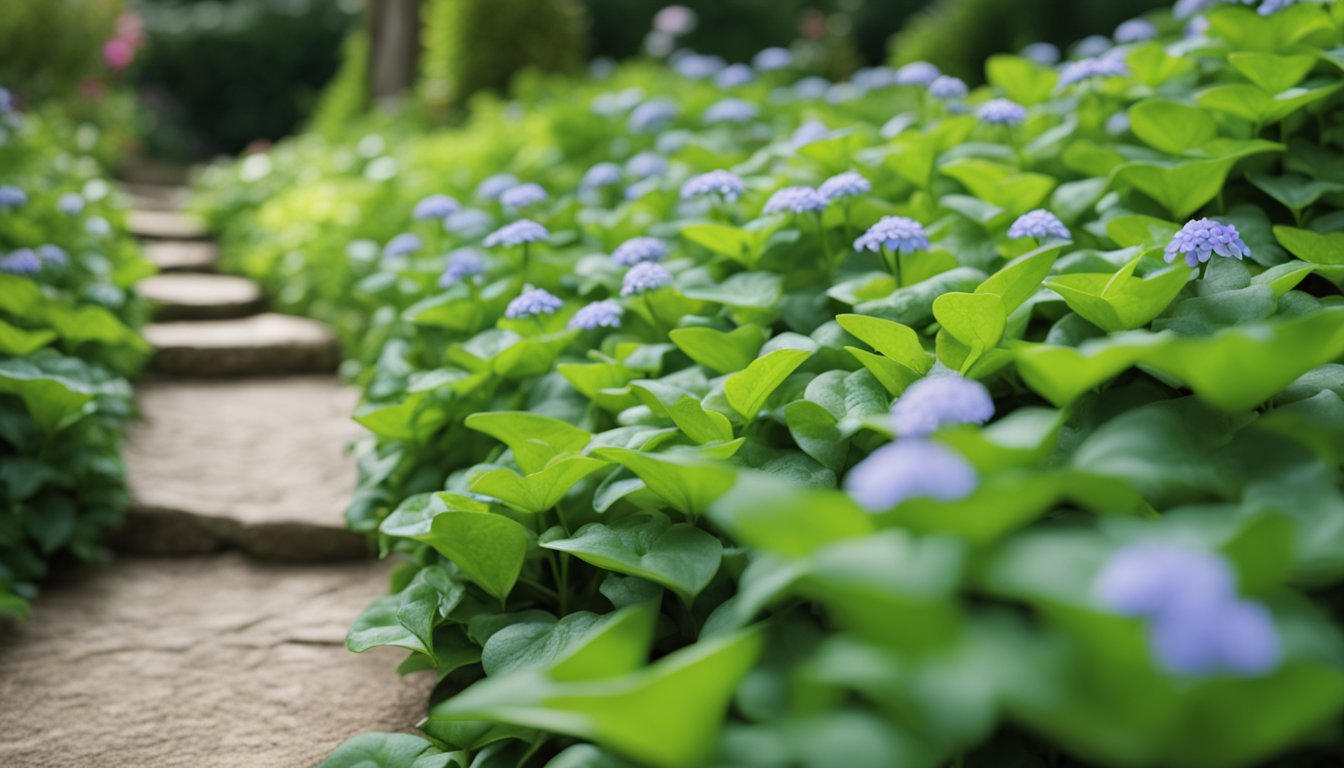Late updated: 30 Jun 2024 08:06
Written by: Emily Thornton
Native UK Groundcovers for Your Garden: Enhance Your Landscape Naturally
Transforming your garden with stunning, effective groundcovers can be both an aesthetic and practical choice. Native UK groundcovers not only add beauty to your garden but also provide essential habitats for local fauna. These plants are uniquely adapted to thrive in our climate, ensuring your garden remains vibrant and healthy year-round.

Selecting the right native groundcovers involves understanding their growth habits and environmental needs. From the striking Japanese Spurge to the versatile Helianthemum, there are many options to suit different garden styles and conditions. These plants can crowd out weeds, protect the soil, and offer a lush, green carpet that enhances the garden's overall appeal.
By integrating a mix of these native species, we can create a more biodiverse and resilient garden. Groundcovers like Hosta 'Francee' offer both attractive foliage and effective coverage, making them popular choices for gardeners aiming to achieve a balance between beauty and practicality.
Key Takeaways
- Native UK groundcovers enhance garden aesthetics and support local wildlife.
- Choose groundcovers that match your garden's conditions for optimal growth.
- Mixed species plantings create diverse, resilient garden ecosystems.
Selecting the Right Groundcover Plants

To create the perfect garden, it's crucial to choose groundcovers that suit your garden's specific conditions. This section will explore key considerations for choosing the best groundcovers for areas with varying sunlight and different soil types.
Considerations for Shade and Sun
Different groundcover plants thrive in varying levels of sunlight. For shaded areas, plants like Hosta ‘Francee’ offer dense foliage that blocks weeds. It’s an evergreen perennial well-suited to shaded patches. Another great option is Vinca minor, known for its vibrant flowers and ability to spread efficiently under trees.
For sunny spots, options like Helianthemum, commonly known as rock rose, excel. These plants are evergreen shrubs with flowers in colours ranging from yellow to pink. Prostrate junipers also thrive in full sun and create a low-maintenance cover with their dense, green foliage. Everyone's garden differs, so assess the light levels throughout the year to ensure proper plant selection.
Soil Types and Groundcover Choices
Groundcover success hinges on matching plants to soil conditions. Well-drained soils are ideal for many evergreen shrubs like Calluna vulgaris, which tolerates acidic soil and thrives in less fertile conditions. These shrubs also offer year-round interest with their foliage and seasonal flowers.
On the other hand, poor soils, which lack nutrients, benefit from hardy species capable of thriving in tough conditions. Plants such as creeping thyme can endure poor soil while adding beauty and fragrance. For areas with heavy clay soil, options like Ajuga reptans are suitable, forming dense carpets that can handle moisture.
By understanding your soil type and choosing accordingly, you’ll ensure that your groundcovers flourish and provide lasting beauty to your garden.
Popular Native Groundcovers for UK Gardens

Native groundcovers in the UK offer various benefits, from evergreen options that provide year-round beauty to flowering plants that add colour to your garden. They help suppress weeds, prevent soil erosion, and are often hardy and low-maintenance.
Evergreen Options for Year-Round Interest
Vinca Minor: Known as lesser periwinkle, Vinca Minor is an evergreen groundcover with dark green leaves and purple or white flowers. It thrives in both sun and shade, making it versatile for various garden spots. Its dense foliage helps suppress weeds effectively.
Pachysandra procumbens: Also known as Allegheny spurge, this groundcover has attractive foliage with lobed, dark green leaves. It prefers shady areas and produces small, fragrant white flowers in the spring. This is perfect for under shrubs or in woodland gardens.
Wild Ginger (Asarum europaeum): Wild ginger features rich green, heart-shaped leaves and performs well in dry shade. Its robust nature makes it an excellent choice for suppressing weeds and preventing soil erosion on slopes or in root-filled areas.
Flowering Groundcovers for Seasonal Colour
Hardy Geraniums: These come in various species, such as Geranium maculatum, which is native to woodlands. Hardy geraniums offer pale pink flowers that bloom in early spring, providing forage for pollinators like butterflies and bumblebees. They are ideal for shaded, moist, and acidic soils.
Creeping Phlox (Phlox subulata): Creeping Phlox forms dense clumps of colourful blooms in pink, purple, and white. It’s suited to sunny borders, rockeries, and gravel gardens. This plant is also hardy and perfect for adding vibrant ground-level colour in spring and summer.
Campanula (Bellflower): Campanula varieties, such as the native harebell, thrive in UK gardens. They offer dainty, bell-shaped blue or purple flowers, and are excellent for attracting bees. Suitable for rock gardens, gravel gardens, and cottage gardens, these are both beautiful and functional.
Hardy Choices for Tough Outdoor Spaces
Sedum: Sedum, also known as stonecrop, is a durable groundcover plant ideal for sunny, dry spots. Its succulent foliage resists drought and it produces clusters of small, star-shaped flowers that attract pollinators.
Creeping Thyme (Thymus serpyllum): This hardy groundcover thrives in poor soils and is perfect for sunny spots and rock gardens. It forms a dense mat of aromatic foliage and produces tiny, pinkish-purple flowers in early summer, attracting bees and other pollinators.
Bugleweed (Ajuga reptans): Bugleweed is perfect for difficult areas, such as under trees or on slopes. It has dark green foliage and blue flower spikes that appear in late spring. This plant is excellent for controlling soil erosion and adding a touch of colour to shady spots.
Frequently Asked Questions

We will explore some of the most common questions about native UK groundcovers, including recommendations for various garden conditions, plant types, and maintenance needs.
Which UK-native ground covers thrive best in shady gardens?
For shady gardens, we recommend the Allegheny Pachysandra (Pachysandra procumbens). It handles shade well and is semi-evergreen, which adds visual interest throughout the year. Another reliable option is Lily of the Valley (Convallaria majalis), which not only thrives in shade but also produces pleasant white flowers in the spring.
What are the top evergreen ground cover plants suitable for UK gardens?
One of the top choices is the evergreen periwinkle (Vinca minor). It is resilient and provides year-round greenery. English ivy (Hedera helix) is another great option and is well-suited for various UK climates, although it's important to manage its growth to prevent it from becoming invasive.
Can you recommend any hardy ground cover plants that withstand foot traffic?
For areas with heavy foot traffic, we suggest Bugleweed (Ajuga reptans). It forms a dense mat that can tolerate being walked on. Thymus serpyllum, also known as creeping thyme, not only handles foot traffic well but also releases a pleasant aroma when crushed underfoot.
Which flowering ground cover plants are native to the UK?
One notable flowering ground cover is the Primrose (Primula vulgaris). It produces charming yellow flowers early in the spring. Another option is the Wild Strawberry (Fragaria vesca) which offers small, edible fruits and delicate white blooms.
Are there any non-invasive ground cover options that perform well in UK climates?
Non-invasive ground covers like the Bearberry (Arctostaphylos uva-ursi) perform admirably without spreading uncontrollably. Woodrush (Luzula sylvatica) is also a great choice, providing coverage without aggressive spreading.
What shrubs are suitable for ground cover in UK garden landscapes?
For shrubs, consider the Cotoneaster horizontalis. This species forms a dense, low-lying habit and produces red berries in autumn. Another suitable shrub is the Creeping Juniper (Juniperus horizontalis), which is evergreen and capable of withstanding UK climates.
